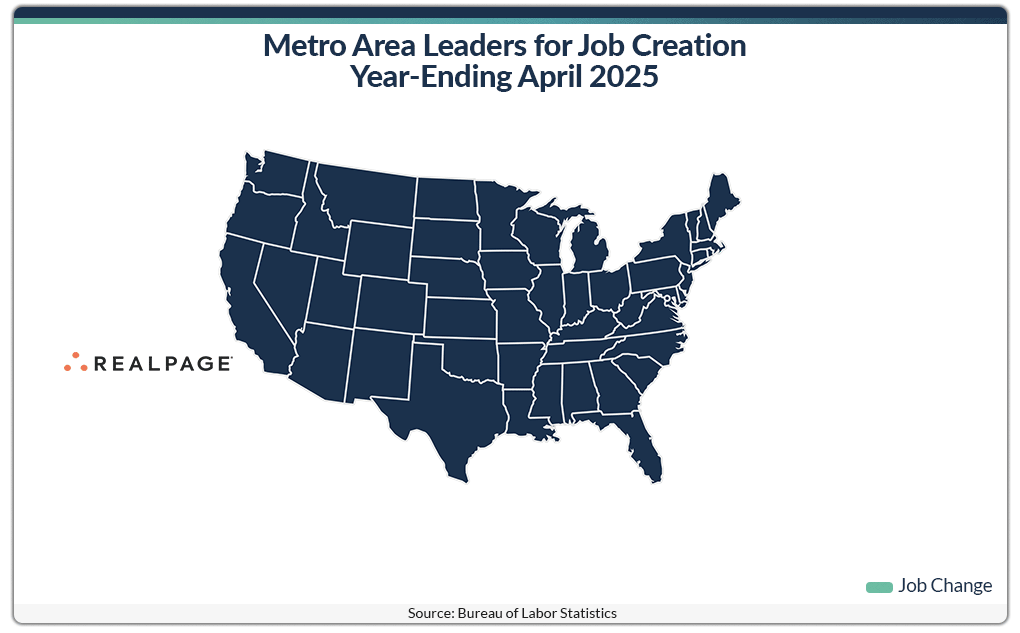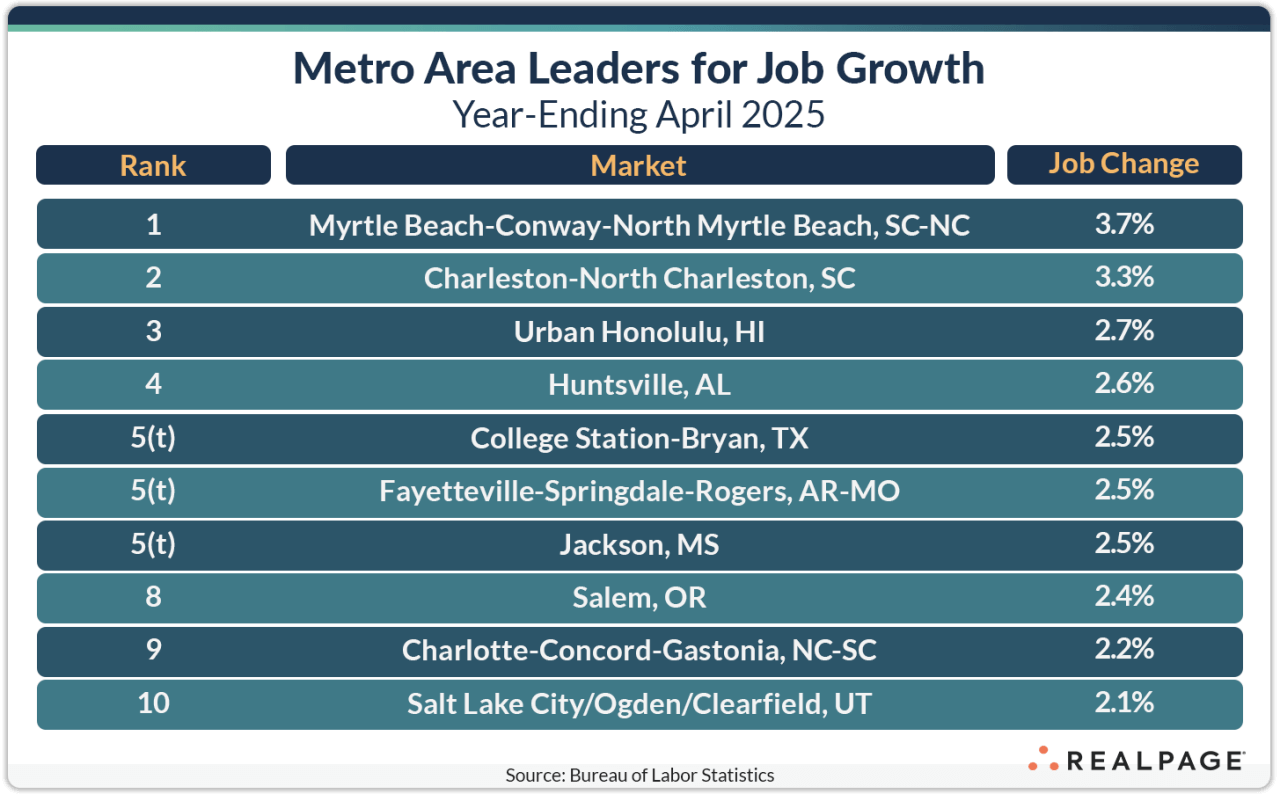Despite a cumulative increase in annual jobs gained among the top 10 markets from March to April, some areas of the country are facing weak employment gains or job cuts.
All three metros in the Bay Area (San Francisco, Oakland and San Jose) suffered moderate job losses for the year-ending April 2025, continuing the trend seen throughout the first few months of this year, according to the latest data release from the Bureau of Labor Statistics.
Additionally, several Midwest metros have begun to experience mild employment losses recently as well, including St. Louis, Kansas City, Des Moines and Milwaukee.
On the other hand, the top markets for job creation continue to lead the nation. Nine of March’s top 10 job gain leaders returned in April, with perennial leader New York once again at the top. New York added 81,000 jobs for the year, slightly higher than last month but down 63,200 jobs from April 2024.
Houston replaced Dallas at #2 on the list and Philadelphia jumped three spots to follow Dallas at #4. Charlotte moved up a spot and Orlando dropped two spots, while Washington, DC slipped to #7 as DOGE cuts have yet to make a meaningful impact on the Capital’s overall employment.
San Antonio and Miami remained among the top 10 job creators in April, but Raleigh/Durham was replaced on this month’s list by Salt Lake City, which improved annual job gains by 6,000 from March and by 8,600 jobs since last year.
Together, the top 10 markets added 347,400 jobs in the year-ending April, about 110,400 less than the same 10 markets last April (down 24.1%). Additionally, the next 10 markets (#11 through #20) of RealPage’s top job gain markets saw their total gains decrease 28.9% from last year to total 158,700 new jobs.
Metro level job gains continue to slow as the last time any market exceeded 100,000 new jobs was in January and only New York gained between 50,000 and 99,999 jobs in April. As was the case last month, the remaining top 10 markets were the only ones gaining 20,000 jobs or more for the year. However, twenty-two of our top 150 markets reported annual job losses for the year, nine less than last month. In addition to the Bay Area and the Midwest markets, job losses occurred in Memphis, Grand Rapids, Portland, OR, Spokane and a few other smaller metros scattered around the country.
Job Growth
Unlike the top job gain markets, which tend to be large in population and employment, smaller markets usually dominate the top markets for annual percentage change in employment. As we typically see, state capitals, college towns and resort or tourist destination cities dominate this list. Only five of March’s top markets for job change returned in April.
Myrtle Beach and Charleston each moved up one spot into the top two on this month’s list with improvement in their percentage growth of 20 to 40 basis points (bps). Honolulu jumped onto the top 10 at #3 with a 70-bps jump in job growth from March to 2.7%.
Huntsville, AL barely outpaced a three-way tie for #5, ahead of College Station, TX, Fayetteville, AR and Jackson, MS as college towns dominate this month’s list with growth of about 2.5%. Salem, OR ranked #8 for job growth, ahead of the larger metros of Charlotte and Salt Lake City.
Outside of the top 10 growth markets, El Paso, San Antonio, Orlando and Raleigh/Durham had employment growth rates of between 1.8% and 2%. Including the top 10 markets, 51 metros exceeded the national not seasonally adjusted growth rate of 1.2%, four more than last month.
This post is part of a series by RealPage Senior Real Estate Economist Chuck Ehmann analyzing employment data from the Bureau of Labor Statistics. For more on this data, read previous posts on Job Growth.









